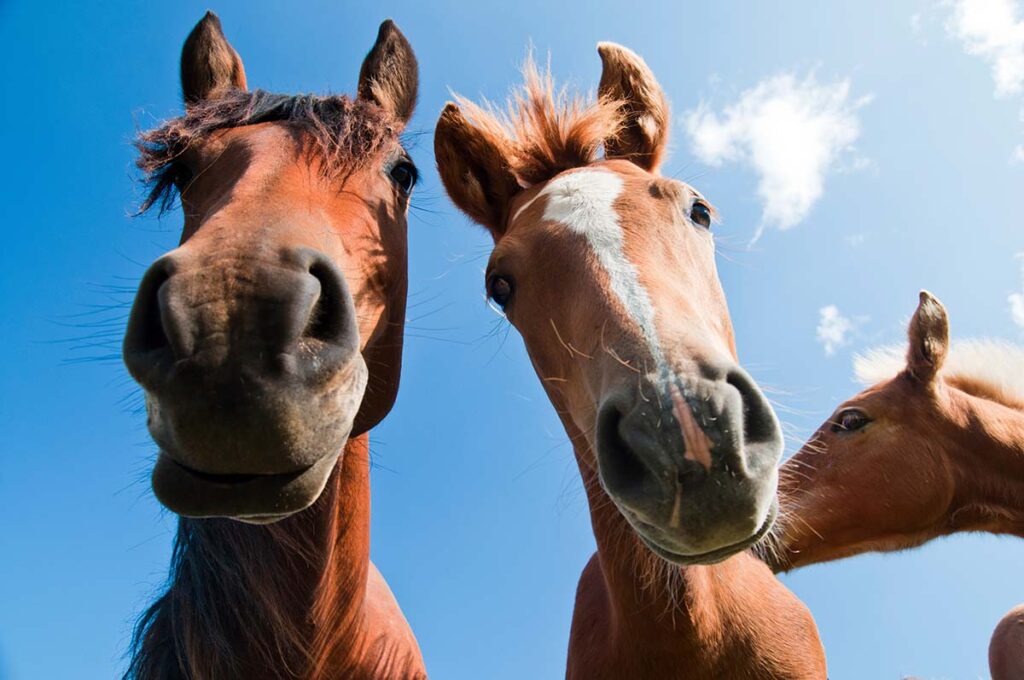Horse-keeping in winter comes with its unique set of challenges. One common problem many horse owners face is the formation of ice balls in their horses’ hooves. Ice balls can cause discomfort and make it difficult for your horse to walk, possibly leading to injuries. In this article, we’ll explain how to prevent ice balls from forming in horses’ hooves and provide tips for removing them when they do.
Why Do Ice Balls Form in Horses’ Hooves?
When a horse walks around in the snow, it packs into the sole of the hoof. The pressure of the horse’s weight causes the snow to melt. Then, as the horse moves again, the water refreezes, forming ice balls. This process continues and, gradually, the ice buildup can become significant, causing pressure points and discomfort, not to mention difficulty moving around. Horses with long or shaggy hair around their hooves can be more prone to ice ball formation because the hair accumulates and traps snow and debris.
Related Reading: Managing a Horse With Sore Feet
Removing Ice Balls From Your Horse’s Hooves
If your horse has ice balls in his hooves, you’ll want to remove them as soon as possible so they don’t become large and painful.
First, pick out his hooves. Use a hoof pick to get rid of any packed-in debris or snow. Start at the heel, working your way toward the toe, removing the bulk of the snow and ice. If the ball is stubborn and still stuck, wait a few minutes for the ice to melt and soften, making it easier to remove with a hoof pick. You can also soak your horse’s hooves in warm water for a few minutes to help melt the ice balls.
Watch: How To Pick Out a Horse’s Hoof
Preventing Ice Ball Formation
The best way to manage ice balls is to prevent them from forming in the first place. Here are some tips to help you keep your horse’s hooves ice-free this winter:
- Go barefoot. Ice balls are typically smaller and easier to remove from bare hooves than shod. This is because the cold metal of the shoe not only traps more wet slush against the foot but also causes it to freeze and harden.
- Add hoof pads. If your horse is shod, ask your farrier about applying snow or ice pads. These come in two types—full pads and rim pads—to keep snow and ice away from the sole of the foot.
- Spread bedding or straw. Consider putting down a layer of shavings or straw on the high-traffic areas of your horse’s paddock. The bedding absorbs moisture and minimizes the amount of snow beneath your horse’s hooves.
- Apply Vaseline. For a temporary home remedy, apply a liberal amount of petroleum jelly or Crisco to the sole of your horse’s hoof. These thick, jellylike substances help prevent snow and ice from sticking. Don’t use caustic products like WD-40 or anything else you wouldn’t apply to your own skin.
- Use hoof boots. Equip your horse with properly fitted hoof boots to keep his feet clean and dry. They can also provide added traction. You’ll need to measure your horse’s foot for the correct size to prevent rubs. Also make sure you choose a boot designed for barefoot or shod hooves, depending on your horse’s needs.
Take-Home Message
Ice balls can cause discomfort and mobility problems for horses during winter. With a few precautions and frequent monitoring, however, you can keep your horse’s hooves ice-free. Check and clean your horse’s hooves daily, and be observant for signs he’s having trouble walking due to ice buildup.
Are you enjoying this content? Sign up for My New Horse’s FREE newsletter to get the latest horse owner info and fun facts delivered straight to your inbox!








